Practical Guide to Crafting a Marketing Strategy for Small Business Success
Marketing is essential for small businesses to attract and retain customers. A well-crafted marketing strategy can help you differentiate your business from the competition and reach your customers effectively. This is a step-by-step guide for small business owners to help create a simple yet comprehensive marketing strategy.
Why You Do What You Do
It’s important for you to clearly define your mission and purpose as a small business owner. This will guide all of your decisions and ensure that you stay true to your values. Your mission should be a concise statement that communicates the value that your business provides to customers. For example, your mission might be “We provide high-quality organic produce to health-conscious consumers in our community.” Your purpose should be more aspirational and focus on the long-term impact that you want your business to have. For example, your purpose might be “We strive to create a sustainable and healthy food system for our community.”
Customer
You need to clearly identify your target customer in order to effectively market your business. Consider factors such as age, income, location, and interests when defining your target customer. For example, your target customer might be “health-conscious individuals between the ages of 25 and 45 who live in our community.” Once you’ve defined your target customer, you can create a customer persona that will help guide all of your marketing efforts. Your customer persona should include information such as demographics, psychographics, pain points, and buying habits.
Product
Your product should be unique and provide value to your target customer. For example, your product might be “organic produce grown on our farm using sustainable farming practices.” Be sure to clearly communicate the benefits of your product to your target customer and how it addresses their pain points, want, and needs.
Price
Your price should be competitive and provide value to your customer. For example, you might charge slightly more than other farmers at the farmers market, but you can communicate the added value of your organic and sustainable farming practices to justify the higher price. It’s also important to consider your cost of goods when determining your price.
Promotion
Your promotion mix should be designed to reach your target customer and communicate the value of your product. For example, you might promote your business through local farmers markets, social media, and word of mouth. You can also offer discounts or promotions to encourage customers to try your product.
Place
You can choose a location for your business by considering factors such as visibility, foot traffic, and competition. For example, you might choose a location in a busy downtown area with high foot traffic and a lack of other similar businesses nearby. You can also consider online channels, such as e-commerce platforms and social media, to reach customers who may not be able to visit your physical location. It’s important to conduct market research to identify the areas where your target customer is most likely to be found and choose a location that is easily accessible to them. You should also consider the cost and availability of the location, as well as any zoning or permit requirements.
Competition, Market, and Industry Analysis
You can analyze the competition, market, and industry by researching your competitors and identifying their strengths and weaknesses. For example, you might research the local farmers market to identify your main competitors and analyze their pricing, product offerings, and target customer. You can also research the overall market and industry trends to identify opportunities and potential challenges. By understanding your competition and market, you can better position your business and make informed decisions about your product, price, and promotion. You can also identify partners that can help expand your reach and provide additional value to customers.
Technology Stack
You can use technology to improve your operations and reach customers. For example, you might use a Point of Sale (POS) system to track sales and inventory, or an e-commerce platform to sell your products online. You can also use social media and email marketing to reach your target customer and promote your business. It’s important to regularly review and update your technology stack to ensure that it’s meeting your needs and keeping up with industry standards.
By following thinking and working through these steps, writing them down, you can create a comprehensive marketing strategy that will help you effectively reach your target customer and grow your small business. Remember to always stay true to your mission and purpose, and to regularly review and adjust your strategy as needed. With a clear understanding of your target customer, a unique product, and a solid promotion plan, you can position your business for success and make an impact in your community.


